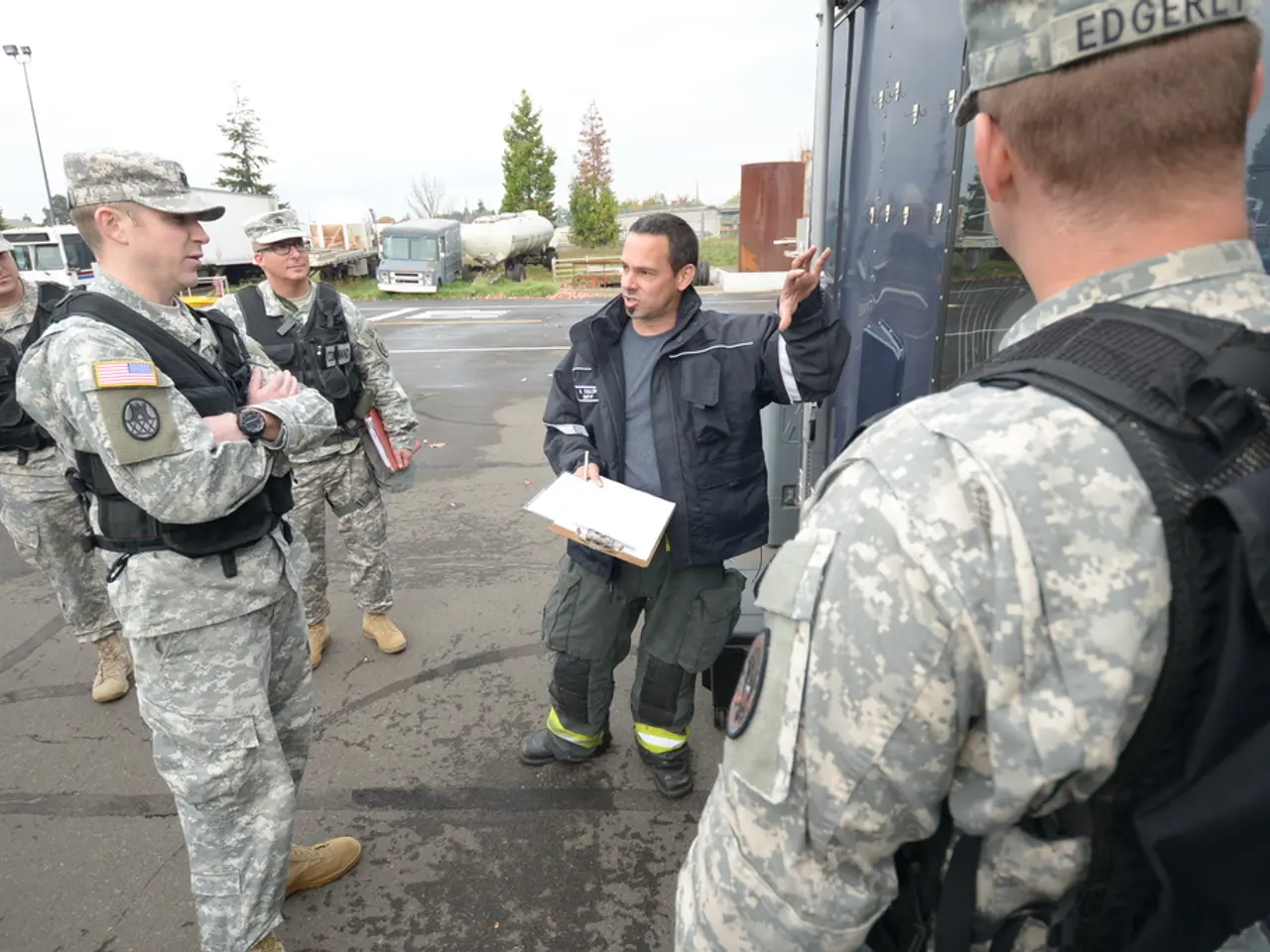Customs Officers Seek Businesses for Instantaneous Car-Mounted Facial Identification at Border Checkpoints
The United States Customs and Border Protection (CBP) is moving forward with plans to implement facial recognition technology on people entering the U.S. by car, as part of a larger $21 billion border modernization effort. This initiative, largely funded by the recently passed "One Big Beautiful Bill" (OBBBA), aims to integrate AI-powered biometric technologies with existing systems.
CBP's new plan comes with several challenges. Privacy concerns and data sharing have been raised, as states like Washington have faced scrutiny over sharing private driver's license data with immigration agencies. To tackle these issues, some states are considering or enacting legislation limiting federal access to DMV facial recognition databases to protect residents’ privacy.
Technology integration and accuracy pose another challenge. CBP aims to automate and streamline passenger checks using AI and machine learning, requiring sophisticated, non-intrusive inspection equipment and ensuring accurate, reliable facial recognition in various conditions.
Legal and jurisdictional challenges also arise. Local jurisdictions, such as New Orleans, face dilemmas over using facial recognition for law enforcement versus immigration enforcement, with concerns over federal demands for data possibly conflicting with local privacy protections.
Implementation deadlines and funding risk are significant issues as well. DHS must submit detailed plans soon and meet the biometric exit capability deadline by September 2026 or risk losing parts of the allocated funding.
CBP has issued a Request for Information to solicit vendors for technology to capture high-quality facial images of people inside vehicles at inbound land ports of entry. The new technology must be able to take usable images of people even in unideal circumstances, like if they aren't looking at the camera or are wearing hats, sunglasses, etc.
Vehicles will first enter the Pre-Primary Zone where live encounter photos are compared to any "in government holding." The captured images will be used for real-time comparisons with the Traveler Verification System, a pre-existing facial recognition system used at various entry points. The new technology will not replace the current system but will be used to develop a two-layer system for border surveillance.
Dave Mass, director of investigations at the Electronic Frontier Foundation, expressed concerns about CBP's one-to-one facial recognition system, as it opens up possibilities where people aren't matched to their own documents. Mass also raised privacy concerns about CBP's plans to expand real-time facial recognition to vehicles, stating that it could allow law enforcement to track not only where a vehicle is going but who is driving it and who is in the car with the driver.
CBP currently collects a wealth of information at border crossings, including a "vehicle package" that consists of a license plate, scene photo, and biographic information. The new technology aims to augment passenger images in the Pre-Primary Zone (PPZ) and allow CBP to capture 100% of vehicle passengers. Vendors have until May 30 to respond to the RFI.
[1] https://www.dhs.gov/sites/default/files/publications/OBBSA-387-Report-to-Congress-FY2021-Final-Version.pdf [2] https://www.dhs.gov/sites/default/files/publications/DHS_Fact_Sheet_Facial-Recognition_Technology_at_Ports_of_Entry.pdf [3] https://www.dhs.gov/sites/default/files/publications/DHS_Fact_Sheet_Facial-Recognition_Technology_at_Ports_of_Entry.pdf [4] https://www.dhs.gov/sites/default/files/publications/DHS_Fact_Sheet_Facial-Recognition_Technology_at_Ports_of_Entry.pdf [5] https://www.eff.org/deeplinks/2022/03/eff-files-federal-lawsuit-challenging-washingtons-facial-recognition-database
- The implementation of facial recognition technology by the Customs and Border Protection (CBP) is part of a larger $21 billion border modernization effort, funded by the One Big Beautiful Bill (OBBBA), which aims to integrate artificial-intelligence (AI) and biometric technologies with existing systems.
- Privacy concerns and legislation limiting federal access to DMV facial recognition databases have been raised due to states sharing private driver's license data with immigration agencies, challenging the technology's integration and accuracy.
- Dave Mass, director of investigations at the Electronic Frontier Foundation, expressed concerns about CBP's one-to-one facial recognition system and its potential to allow law enforcement to track not only the vehicle's destination, but also the identity of the driver and passengers, raising privacy issues.
- CBP's plan to capture high-quality facial images of people inside vehicles at inbound land ports of entry, even in less-than-ideal circumstances like not looking at the camera or wearing hats and sunglasses, presents challenges for technology vendors as the deadline for responses to the Request for Information (RFI) is approaching on May 30.




